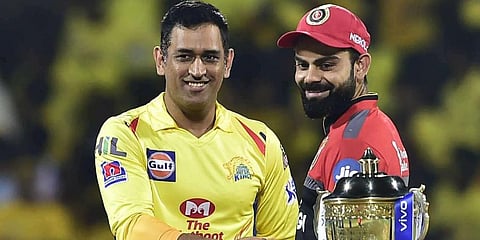

As the 13th edition of the tournament approaches, I wonder whether the Indian Premier League would have been such a resounding success had India not won the inaugural Twenty20 World Championship in 2007. Remember, India was the last country to agree to play in this. The ICC had to implore the recalcitrant Indian cricket establishment to agree. There was good reason for the ICC’s desperation.
By the start of the new millennium, nearly 70% of the viewership for international cricket came from India. This translated into whopping revenues for India—about 70% too—which had increased the BCCI’s clout manifold, often leading to internecine battles and stand-offs with the ICC. Without an Indian team, the T20 WC would have been lacklustre at best. If the administrative part looked prickly, apathy for the inaugural World Championship was not restricted to BCCI officials, but also afflicted Indian players.
On the tour of England in 2007, I remember speaking to several players about the upcoming tournament in South Africa. Some seemed eager, but some senior players were reluctant. One even referred to T20 as ‘Mickey Mouse’ cricket! At that point in time, Indian cricket—the players fraternity and administration—seemed to be at sixes and sevens against itself. In fact—despite the fine performances in England—it was in deep turmoil, off and on the field. Bad vibes emanating from the unsavoury tussle between Sourav Ganguly and coach Greg Chappell—which had stretched for more than a year and sucked in other players too—had made relations in the dressing room sullen.
Off the field, there was strife over the issue of broadcast rights for Indian cricket. Zee Telefilms promoter Subhash Chandra had made the highest bid a year earlier, yet lost out on a technicality. He was seething and seeking retribution. In August 2007, Subhash Chandra threw down the gauntlet at the BCCI, announcing the Indian Cricket League, a T20 tournament owned and promoted by him and to be played in India. Nobody had challenged the BCCI in this manner.
It caused consternation and some panic. In England, meanwhile, another crisis was building up. India’s Test series win in England after 21 years was an occasion to savour, but the ODI World Cup fiasco in West Indies a few months earlier still lingered. Coach Greg Chappell had quit—or was asked to leave—before this tour. By the time the England tour ended in the first week of September, Indian cricket was thrown into a tailspin with Rahul Dravid announcing he was surrendering the captaincy as he wanted to focus on his batting.
The timing of Dravid’s decision left the Indian administration and selectors frazzled. Moreover, several senior players—Dravid himself, Sachin Tendulkar, V V S Laxman, Ganguly, Zaheer Khan—opted out or were rested for the T20 WC that was to begin in a week’s time in South Africa. With the tournament imminent, India looked beleaguered. The hunt for someone to lead the young Indian team settled with M S Dhoni. With big guns missing—where all other teams had their best players—India’s prospects of going far in the tournament were bleak.
As things panned out, Dhoni’s team beat Pakistan in a Super Over play-off first up, and after a series of sizzling performances, beat the arch-rivals again in a pulsating final. India erupted into frenzied delight. Within only a few weeks, the country had discovered, adopted and become addicted to T20 cricket.
On the outside, this sensational victory spurred the BCCI into decisive action. The IPL had been announced mid-way through the World T20, largely as a means to scuttle the ICL. But with the Indian team winning the title, the venture got unexpected scalability.
The World Championship had provided a template: dollops of razzmatazz and high celebrity quotient to supplement the on-field action. The BCCI, with Lalit Modi as spearhead, tweaked this to concoct a heady cocktail of cricket, Bollywood and big business at breakneck speed. The first objective was to stymie the ICL’s first season, scheduled for November-December 2007. By that time, Modi had put together a blueprint for the IPL, which would feature the world’s best players; the teams would be owned by some of the most renowned moneybags in India.
By end-January 2008, eight franchises were sold. By mid-February, cricketers were auctioned, the first time in the game’s history. By mid-April, the first IPL match was played in Bengaluru. On June 1, after six weeks of high-octane excitement, the first IPL final was played at the D Y Patil Stadium in Navi Mumbai. There were many skeptics who said the IPL’s lustre would fade quickly and the tournament would fizzle out. Despite several controversies, the IPL thrives.
In 2019, after just 12 editions, it was valued at a whopping $6.8 billion by Duff and Phelps, among the top six most-coveted sports properties. In hindsight, it would seem logical that the game’s newest format would have found ready acceptance in cricket-mad India. Yet how long would this have taken—as the fuddy-duddies who ran Indian cricket were terribly reluctant to change—if the team had not won the first T20 World Championship is a question that is still moot.
Ayaz Memon
Mumbai-based journalist who writes on sports, society and other matters
(amemon1@gmail.com)